Monthly economic brief: June 2021
The monthly economic brief provides a summary of latest key economic statistics, forecasts and analysis on the Scottish economy.
This document is part of a collection
Business Activity
Business activity has strengthened as lockdown restrictions have eased in April/May.
Proportion of business trading[2]
- The easing of restrictions over April and May has seen a strong increase in the share of businesses trading, driven by those in consumer facing services sectors (hospitality, entertainment, non-essential retail) which had closed during lockdown.
- In the first half of June, 97% of businesses were trading, having gradually risen from the recent low point of 82% during lockdown in January, and is back around the same level as in September 2020.
- The largest increases since April have been in the accommodation and food services sector in which 90% of business are trading (up from 35% at the start of April) and in the arts, culture and recreation sector (92%, up from 51% at the start of April).
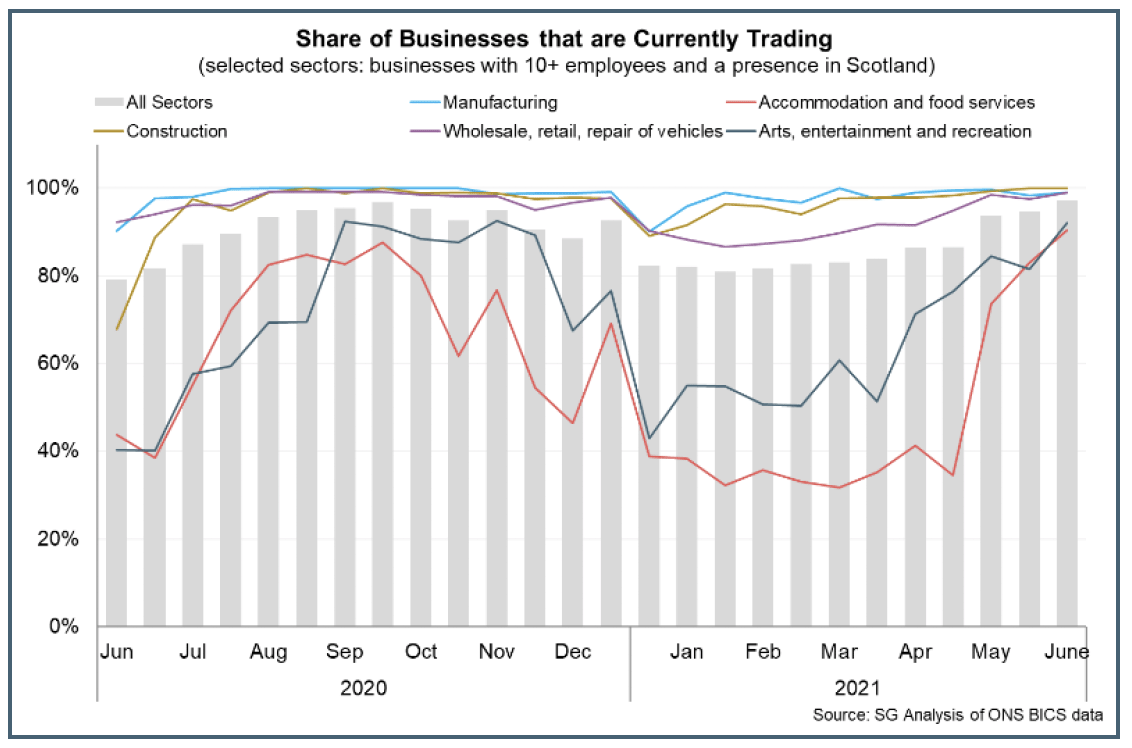
- The proportion of business trading in wholesale, retail and repair of vehicles has also increased, and as a sector has largely reopened (99%, up from 92% at the start of April). Non-consumer facing services sectors (e.g. information and communication) and manufacturing and construction have been less impacted with over 98% of business trading over this period, reflecting the ability to continue operations through home working and/or adapting operations to the restrictions in place.
Business output
- The increase in businesses trading as restrictions have eased is reflected in the Purchasing Managers Index (PMI)[3] business survey which reported a further increase in business activity in May, with strengthening growth reported across the services and manufacturing sectors.
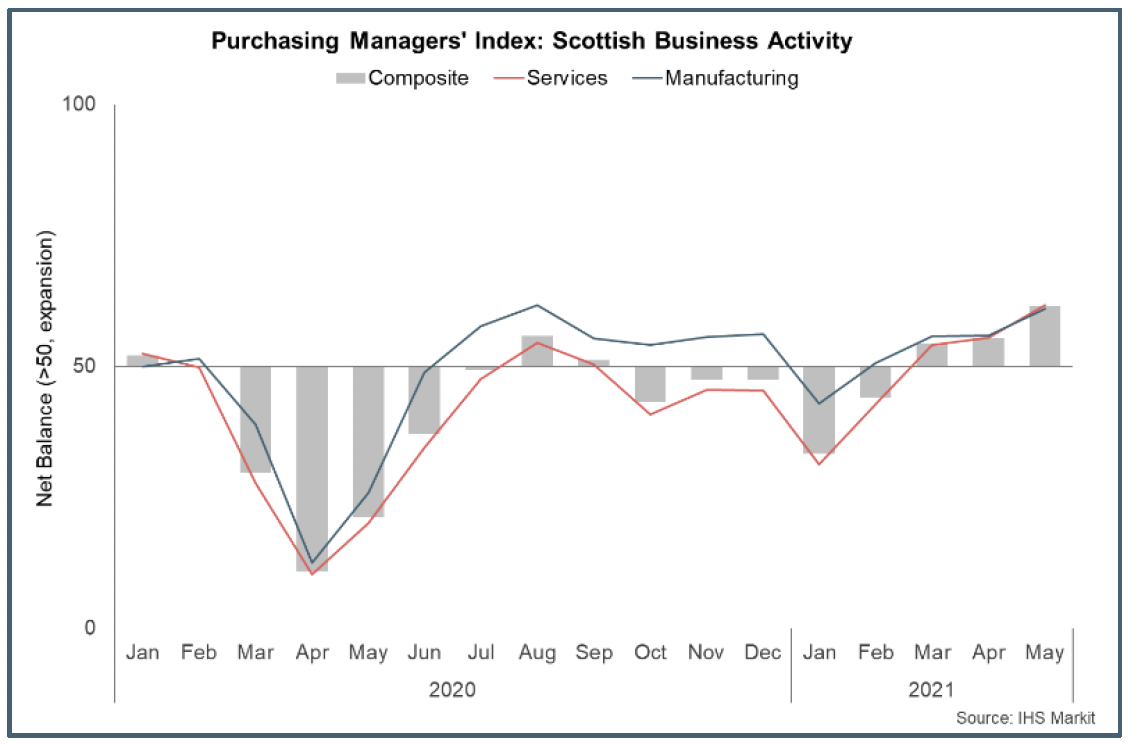
- The rise in activity was underpinned by a strong pick-up in new business/orders across both the manufacturing and services sectors, with the former continuing to show slightly stronger demand at this stage of the recovery.
- While growth in activity and demand is strengthening, the capacity at which business are operating and turnover generated compared to what would be normally expected, continue to differ across sectors.
- At the start of June, 33% of businesses reported having lower turnover than normal for the time of year, while 42% reported that turnover was not affected and 12% reported that it had increased.[4] The arts, entertainment and recreation services sector has the highest proportion of firms (73%) reporting that business turnover is lower followed by the accommodation and food sector (54%).
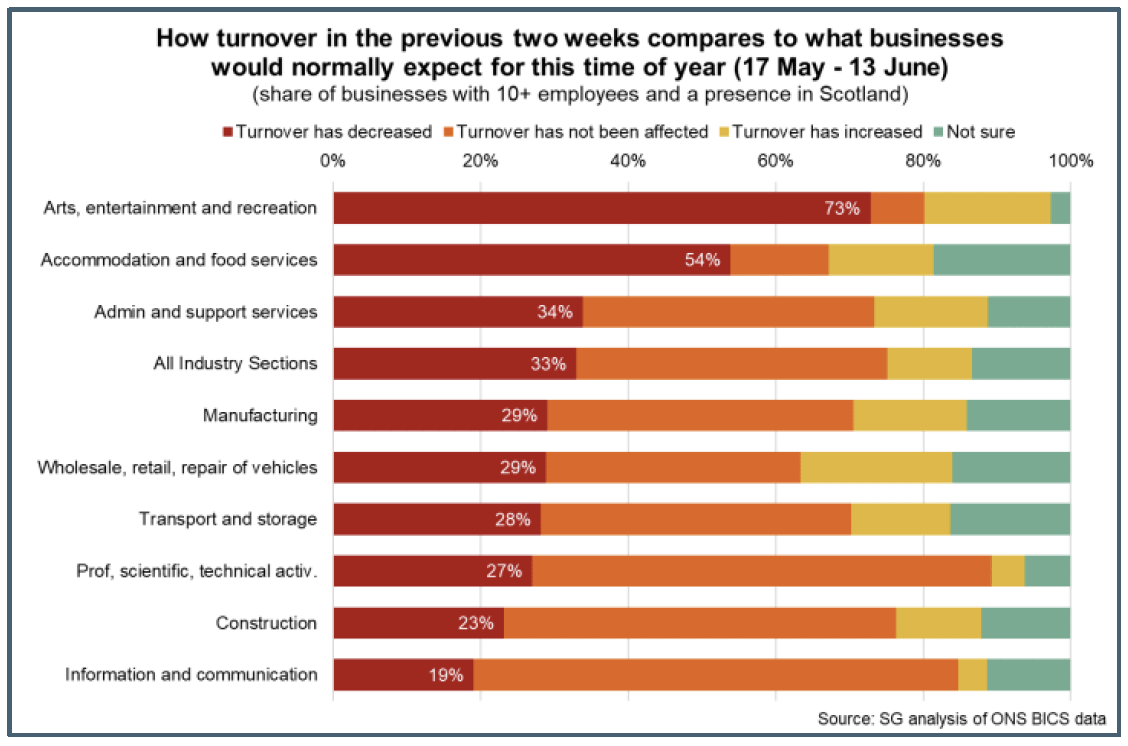
- However, there are indications that conditions have gradually improved since March. The proportion of business overall reporting lower turnover has fallen from around 45% to 33%, while the proportion reporting a rise in turnover has increased from around 6% to 12%.
- Furthermore, looking to the year ahead, the PMI business survey for May showed that business optimism continued to strengthen across the services and manufacturing sectors, with easing of Covid restrictions over the coming months expected to support further strengthening in business activity.
Trade
- Alongside a strengthening domestic environment, the international context has also strengthened in recent months supporting more stability in international trade. However, Scotland's goods exports fell 21.3% in 2020 and while there has been some recovery in UK international trade since January, latest data indicate that trade remains below pre-pandemic levels and supply chain challenges remain elevated.
- In April, UK overseas goods exports fell 13% over the month while imports fell 7%.[5] Looking at the first four months of 2021 as a whole, UK goods exports were down 12% and imports down 10% compared to the same period of 2018 (the most stable recent period when trade was not impacted by the pandemic and the end of the EU transition period). Over this period, exports to the EU have declined 19% and exports to non-EU countries by 4%.
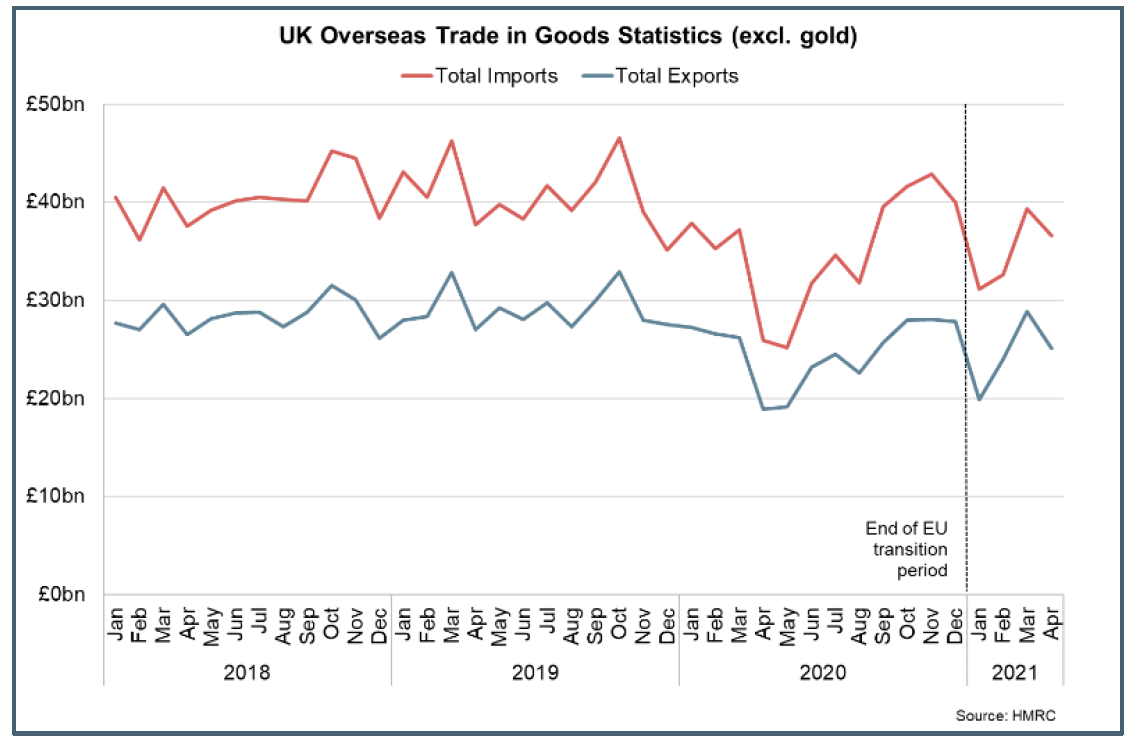
- Key exporting sectors for Scotland followed this pattern. Relative to March, monthly exports of Scotch Whisky were down 9% in April (the first four months of 2021 were 4% down on the same period in 2018), while exports of fish fell 8% in April (the first four months of 2021 were 72% down on same period in 2018).
- More recent business survey data for Scotland indicates that in the first half of June, 55% of businesses were exporting as normal (up from 42% at the start of February) while 29% were exporting less than normal for the time of year (down from 38% at the start of February) indicating some stabilisation over the period.[6]
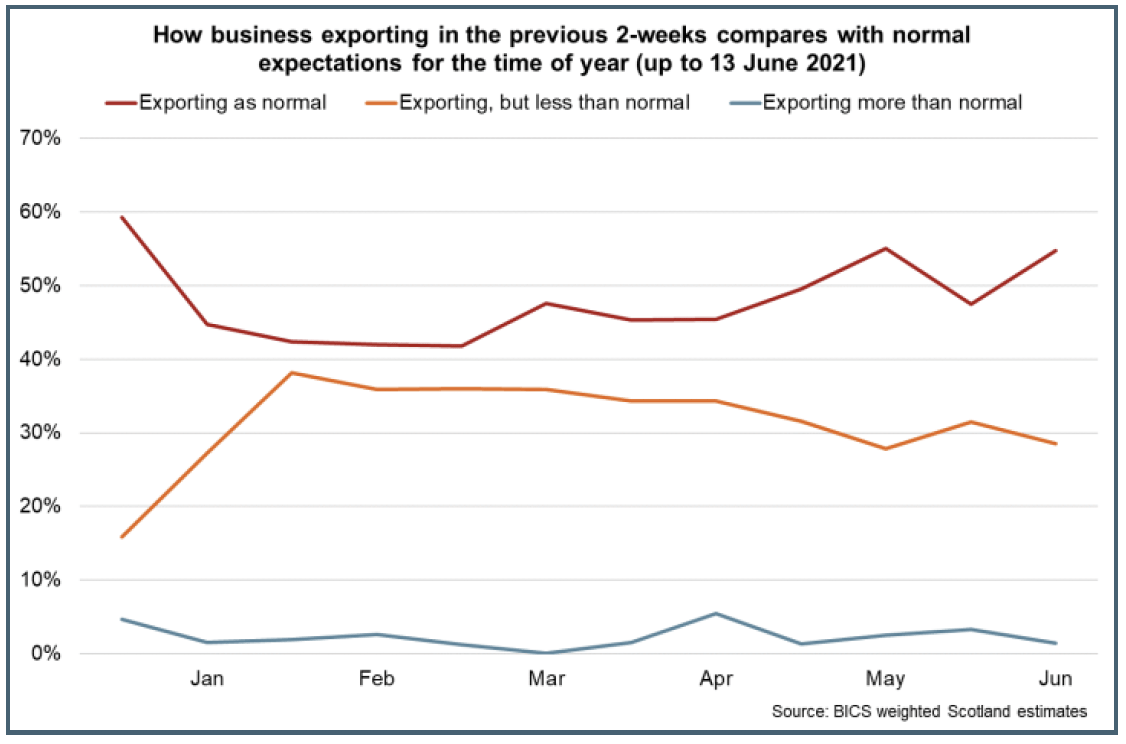
- However, the flash UK PMI business survey for June signalled that export new orders remained soft, relative to total new orders growth, while ongoing pressure in global supply chains was evident with a further deterioration in the suppliers' delivery time index to its lowest level since April 2020.[7]
Contact
Email: OCEABusiness@gov.scot
There is a problem
Thanks for your feedback